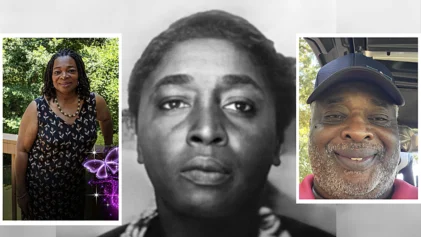On Feb. 4, the basement of a home on the 3300 block of Q Street NW across from Volta Park in the nation’s capital was being renovated when workers found four human skeletons, the Georgetowner reported.
According to one Washington historian, at least one set of remains could possibly be those of Yarrow Mamout, an African man captured From Guinea in the 18th century and pressed into slavery in America who later bought his freedom after years of saving his money. He was able to earn money through working on a sailing ship called Maryland, according to reports. His wages were given to his master, but Mamout was smart and saved up enough money to earn his way out of slavery.
After he was freed, Mamout amassed more wealth through the years using his many skills.

“He was an educated individual. He read and spoke Arabic. He had been kidnapped in West Africa and brought to Maryland,” said Jerry McCoy, a special collections librarian at the DC Public Library, told the Georgetowner.
A forensic investigation is underway to determine if the remains belong to Mamout, who was a Muslim and a renaissance man known as a jack-of-all trades in Georgetown. Among his jobs, he was a bricklayer who built his own home, a charcoal maker and ship loader.
According to an 1800 census, some 3,244 slaves and 793 free Blacks lived in the District of Columbia during that time.
The man was enslaved after being taken from Guinea and brought to Annapolis in 1752 at the age of 16. He was owned by Samuel Beall and later on by Beall’s son Brooke in Georgetown. He was eventually freed 44 years after he was captured by the time he was 60 years old.
“Not only is he [Mamout] one of the best documented Africans to live in early Georgetown, but he was a practicing Muslim. That’s important because too many people are unaware of the long presence of Muslims in America,” Adam Rothman, a professor in Georgetown’s department of history specializing in slavery and abolition, previously told The Hoya.
According to the National Portrait Gallery, Mamout also saved his money and bought stock at the Columbia Bank of Georgetown and ultimately purchased land on Dent Place. His likeness has also become a part of local history. A portrait of him commissioned by James Alexander Simpson is on display at the Georgetown Library.
“He was purported to be the strongest swimmer in the Potomac River,” McCoy said. “He was a local legend.”
The home on 3317 Q Street where the remains were found backs up to the 3324 Dent Place property formerly owned by Mamout, who died in 1823 around the age of 88. His old log cabin home structure no longer remains on that property.
In 2015, Mamout’s biographer, James H. Johnson, voiced his suspicions at a Georgetown board meeting that Mamout’s remains were probably buried somewhere undisturbed on his former property, The Washington Post reported then.
The neighborhood residents are used to discoveries like this, since the area was once Presbyterian cemetery in the 1800s, and several skeletons have been excavated from graves before, according to reports. Some 60 years ago, a tombstone reportedly was found on the roof of the house.
After the recent discovery, the renovation effort being done by Prinar Development LLC and Christian Zapatka Architect, PLLC was stopped so that historians could preserve the findings. The bones were donated to the Historic Preservation Office, the outlet reports.
“[It] would be an incredible discovery if that was able to be determined through DNA,” McCoy said.


